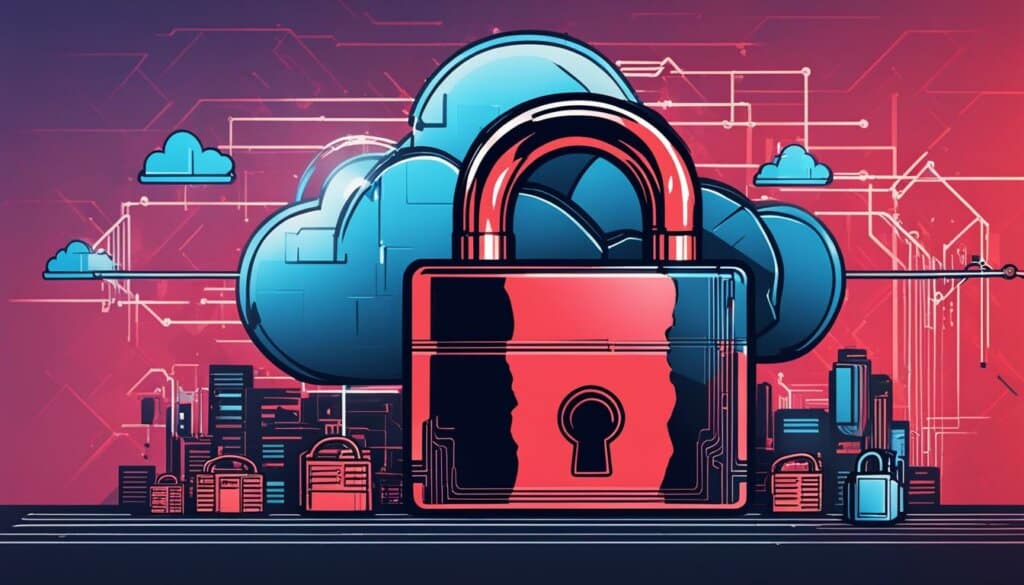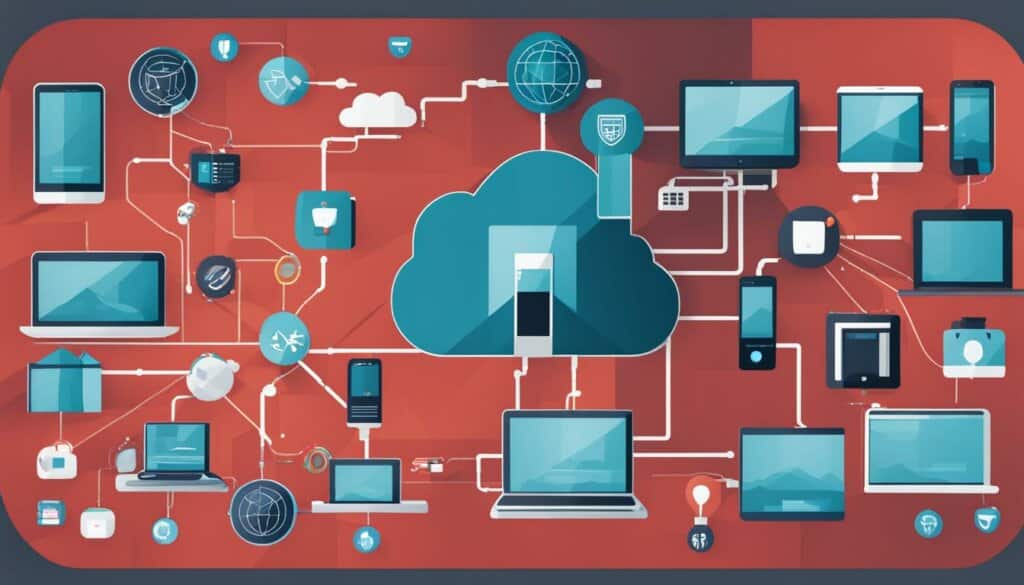Table of Contents
Welcome to “Mastering Cybersecurity Fundamentals: A Comprehensive Guide to Understanding, Implementing, and Embracing Cyber Defence.” In this age of digital transformation, our reliance on technology has underscored the urgent need for robust cybersecurity. As cyber threats continue to evolve in complexity and scale, understanding and implementing effective cybersecurity strategies have become paramount for individuals, businesses, and governments alike. From the basics of cybersecurity to network and endpoint security, data protection, incident response, and emerging technologies, this guide aims to provide a comprehensive knowledge base for both seasoned professionals and beginners in the field.
Whether you’re looking to deepen your understanding of cybersecurity concepts or seeking practical advice on safeguarding your digital landscape, this guide covers it all. From the foundational principles to the latest trends and challenges, we’ve compiled a wealth of information to help you navigate the intricate world of cybersecurity.
Throughout this guide, you’ll discover key insights into cybersecurity fundamentals, explore different types of cyber attacks and their associated risks, analyze current scenarios and future challenges, and learn about the importance of cybersecurity training and career pathways. We’ll also delve into specific areas of cybersecurity, such as network security, cloud security, and IoT security, providing you with valuable knowledge that you can apply in real-world situations.
So whether you’re a cybersecurity professional seeking to enhance your skills or someone looking to develop a solid foundation in cybersecurity, this guide will serve as your ultimate companion. Get ready to embark on a journey of mastering cybersecurity fundamentals, understanding the basics, and unlocking the key principles that underpin a secure digital future.
Introduction to Cybersecurity
Cybersecurity, at its core, is the practice of protecting computers, servers, mobile devices, electronic systems, networks, and data from digital attacks, damage, or unauthorized access. With the increasing reliance on technology in our daily lives, understanding the fundamentals of cybersecurity has become essential. In this section, we will delve into the basics of cybersecurity and explore the three primary principles it revolves around: confidentiality, integrity, and availability.
Confidentiality focuses on keeping sensitive information private and limiting access to authorized individuals or systems. Integrity ensures that data remains accurate, complete, and unaltered throughout its lifecycle. Availability ensures that systems and data are accessible and functional when needed. By understanding and implementing these principles, individuals and organizations can establish a solid foundation for protecting themselves from cyber threats.
Understanding the Principles of Cybersecurity
To further grasp the importance of cybersecurity, let’s explore the principles in more detail:
- Confidentiality: This principle encompasses measures such as encryption, access controls, and secure communication channels to protect sensitive data from unauthorized disclosure or viewing.
- Integrity: Integrity ensures the accuracy and trustworthiness of data. It involves implementing mechanisms to detect and prevent unauthorized modifications, ensuring data remains unchanged and reliable.
- Availability: Availability focuses on ensuring that systems, networks, and data are accessible when needed. This involves implementing redundancy, disaster recovery plans, and measures to mitigate downtime.
By applying these principles, individuals and organizations can build a strong cybersecurity foundation and protect against a range of threats, including data breaches, ransomware attacks, and unauthorized access.
| Principle | Description |
|---|---|
| Confidentiality | Protecting sensitive information from unauthorized access |
| Integrity | Maintaining the accuracy and trustworthiness of data |
| Availability | Ensuring systems and data are accessible when needed |
The Importance of Cybersecurity
Cybersecurity is of utmost importance in today’s interconnected world. As technology continues to advance and our reliance on digital platforms grows, the need for robust cybersecurity measures becomes increasingly critical. Cyber threats are evolving in complexity and scale, posing significant risks to individuals, businesses, and even national security. Understanding the principles and concepts of cybersecurity is key to protecting sensitive information, preserving customer trust, and safeguarding critical infrastructure.
“In our increasingly interconnected world, cybersecurity has become more important than ever.”
The rapid pace of technological advancements brings both opportunities and challenges. While innovations drive efficiency and connectivity, they also open doors for cybercriminals to exploit vulnerabilities. Cybersecurity forms a vital defense against these threats, ensuring the confidentiality, integrity, and availability of data and systems. By implementing effective cybersecurity measures, individuals and organizations can mitigate risks, prevent unauthorized access, detect and respond to incidents, and maintain the trust and confidence of stakeholders.
In addition to data protection, cybersecurity plays a crucial role in preserving customer trust. With the increasing reliance on online services for financial transactions, personal information, and communication, individuals expect their data to be secure. Breaches and cyberattacks can result in reputational damage, financial loss, and legal ramifications. By prioritizing cybersecurity, organizations demonstrate their commitment to safeguarding customer information and fostering a secure digital environment.
Safeguarding critical infrastructure and national security is another key aspect of cybersecurity. With the rise of cyber warfare and the potential for nation-state attacks, governments and organizations must continually enhance their cybersecurity capabilities. Protecting essential services such as power grids, transportation systems, and communication networks is essential to ensure the stability and resilience of a nation’s infrastructure.
The Importance of Cybersecurity
| Cybersecurity Principles | Cybersecurity Concepts | Cybersecurity Fundamentals Explained | Understanding Cybersecurity Fundamentals |
|---|---|---|---|
| Confidentiality | Threats and vulnerabilities | Risk assessment and management | Security frameworks and standards |
| Integrity | Types of cyber attacks | Incident response and recovery | Security awareness and training |
| Availability | Security controls and technologies | Encryption and authentication | Compliance and regulations |
Unpacking the Spectrum of Cyber Attacks
In the ever-evolving landscape of cybersecurity, it is essential to understand the various types of cyber attacks that pose a threat to individuals, businesses, and governments. By unpacking the spectrum of cyber attacks, we can gain valuable insights into the techniques employed by cybercriminals and develop effective strategies to mitigate the risks.
Cyber attacks can take many forms, each with its own unique characteristics and potential impact. Here, we will explore some of the most prevalent types of cyber attacks:
- Malware Attacks: These involve the use of malicious software to gain unauthorized access or cause harm to computer systems. Common types of malware include viruses, worms, ransomware, and spyware.
- Phishing Attacks: Phishing attacks aim to deceive individuals into providing sensitive information, such as passwords or credit card details, by impersonating a trustworthy entity. These attacks often occur through email, text messages, or fake websites.
- Man-in-the-Middle Attacks: In this type of attack, an adversary intercepts and alters communications between two parties without their knowledge. This allows the attacker to eavesdrop, steal information, or manipulate data without detection.
- Distributed Denial-of-Service (DDoS) Attacks: DDoS attacks overwhelm a target system by flooding it with a massive amount of traffic, rendering it inaccessible to legitimate users. These attacks disrupt services and can cause significant financial and reputational damage.
- SQL Injection Attacks: SQL injection attacks exploit vulnerabilities in web applications that use SQL databases. By injecting malicious SQL queries, attackers can manipulate the database, access sensitive information, or even gain control over the underlying server.
- Zero-day Exploits: Zero-day exploits target vulnerabilities in software that are unknown to the vendor or have no available patches. Attackers can exploit these vulnerabilities to gain unauthorized access or control over systems before a fix is developed.
Understanding the nature of these attacks is crucial for building a robust cybersecurity strategy. By implementing proactive measures such as regular software updates, employee education, strong passwords, multi-factor authentication, and network monitoring, individuals and organizations can significantly reduce their risk of falling victim to cyber attacks.

Examining Current Scenarios and Future Challenges in Cybersecurity
In today’s ever-evolving digital landscape, it is essential to stay informed about the current scenarios and future challenges in cybersecurity. By understanding the latest trends and potential threats, individuals and organizations can proactively adapt their cybersecurity strategies to mitigate risks and protect their digital assets. This section will delve into the present state of cybersecurity and explore the challenges that lie ahead, providing valuable insights into the future of cybersecurity.
The Current Landscape of Cybersecurity
In recent years, the cybersecurity landscape has witnessed significant developments that have reshaped the way we approach digital security. With the rise of remote work, the focus has shifted towards securing distributed networks and endpoints. Additionally, the alarming increase in ransomware attacks has highlighted the need for stronger defense mechanisms to protect sensitive data and ensure business continuity.
Another key aspect of the current cybersecurity landscape is the increasing role of artificial intelligence (AI) and machine learning (ML) in both cyber defense and cyber attacks. While AI and ML can help detect and respond to threats more efficiently, they can also be leveraged by cybercriminals to launch more sophisticated and targeted attacks.
Future Challenges in Cybersecurity
The future of cybersecurity presents a host of challenges that require careful consideration and proactive measures. As emerging technologies like the Internet of Things (IoT), quantum computing, and 5G connectivity become more prevalent, new vulnerabilities and attack vectors will arise. It will be crucial to stay ahead of these trends and develop robust security frameworks to safeguard against emerging threats.
Another significant challenge is the widening cybersecurity skills gap. The demand for skilled cybersecurity professionals continues to outweigh the available talent pool, leading to a shortage of expertise in the field. Bridging this gap will require proactive efforts in promoting cybersecurity education and training programs.
Cybersecurity Training and Career Pathways
As the demand for cybersecurity professionals continues to grow, acquiring the necessary skills and qualifications is essential. Cybersecurity training provides individuals with the foundational knowledge and practical experience needed to navigate the complex world of cybersecurity. Whether you are starting your career or looking to upskill, cybersecurity training offers a wide range of pathways to explore.
There are several steps to master the fundamentals of cybersecurity. Firstly, it is important to get acquainted with the basic principles, including confidentiality, integrity, and availability. Understanding these principles forms the building blocks for implementing effective cybersecurity strategies.
Once you have a solid foundation, gaining practical skills through simulated environments is crucial. Cybersecurity training programs often include hands-on exercises and simulations that simulate real-world cyber threats. These provide you with the opportunity to apply your knowledge and practice responding to different types of attacks.
| Cybersecurity Training Pathways | Key Benefits |
|---|---|
| Online Courses and Certifications | – Flexibility to learn at your own pace – Opportunity to earn industry-recognized certifications |
| Bootcamps and Workshops | – Intensive, hands-on learning experience – Networking opportunities with industry professionals |
| Internships and Apprenticeships | – Gain real-world experience – Learn from experienced professionals – Build a professional network |
Lastly, obtaining certifications and pursuing internships or apprenticeships can provide valuable real-world exposure. Certifications such as CompTIA Security+, Certified Ethical Hacker (CEH), and Certified Information Systems Security Professional (CISSP) are highly regarded in the cybersecurity industry and can help demonstrate your expertise to potential employers. Internships and apprenticeships offer hands-on experience in a professional setting, allowing you to apply your skills and learn from experienced cybersecurity professionals.
Exploring Cybersecurity Career Pathways
Cybersecurity offers a diverse range of career pathways. Some common roles in the field include:
- Security Analyst: Responsible for monitoring networks, identifying vulnerabilities, and responding to security incidents.
- Penetration Tester: Conducts controlled attacks on systems to identify weaknesses and improve security measures.
- Security Consultant: Provides expert advice on cybersecurity strategies and assists organizations in implementing effective security measures.
- Security Engineer: Designs and builds secure systems and infrastructure to protect against cyber threats.
The demand for cybersecurity professionals extends across industries such as healthcare, finance, government, and technology. With the ever-increasing threat landscape, cybersecurity professionals play a crucial role in safeguarding sensitive information and protecting against cyber attacks.
Network Security: Safeguarding Your Digital Perimeter
Network security is a fundamental aspect of cybersecurity. It involves implementing measures to protect the internal and external networks of an organization from unauthorized access and potential attacks. As the digital perimeter that connects various devices and systems, a secure network is essential to ensure the confidentiality, integrity, and availability of critical information.
Managed IT services play a crucial role in network security by providing proactive and responsive solutions. These services help establish the necessary safeguards, such as firewalls, intrusion detection systems, and security policies, to prevent unauthorized access and potential breaches. By partnering with a reliable managed IT service provider, organizations can enhance their network security posture and minimize the risk of cyber threats.
The Importance of Managed IT Services in Network Security
Managed IT services offer comprehensive network security solutions that go beyond traditional approaches. They focus on continuous monitoring, threat detection, incident response, and vulnerability management to ensure the ongoing protection of an organization’s network. These services analyze network traffic, identify suspicious activities, and respond promptly to mitigate any potential threats.
Moreover, managed IT services provide expertise in navigating the evolving landscape of cyber threats. They stay updated with the latest security technologies, industry best practices, and regulatory compliance requirements. This knowledge allows organizations to adapt their network security strategies and stay ahead of emerging threats.
| Key Benefits of Managed IT Services in Network Security: |
|---|
| 24/7 monitoring and threat detection |
| Proactive incident response |
| Regular vulnerability assessments and patch management |
| Expertise in network security technologies and practices |
| Compliance with industry regulations |
In today’s interconnected world, network security is critical for organizations of all sizes. By partnering with managed IT service providers, businesses can safeguard their digital perimeters and protect sensitive information from potential cyber threats.

Securing Your Data in the Cloud
With the increasing adoption of cloud services, securing your data stored and transmitted through the cloud is vital. Cloud security encompasses the policies, technologies, and controls used to protect data, applications, and infrastructure associated with cloud computing. By implementing robust cloud security measures, individuals and organizations can minimize the risk of data breaches, unauthorized access, and other cybersecurity threats.
Partnering with a managed IT service provider can greatly enhance your cloud security strategy. These experts have the knowledge and experience to assess your cloud infrastructure, identify vulnerabilities, and implement encryption and access controls. They can also monitor the cloud environment for emerging threats and proactively respond to any security incidents that may arise. By leveraging the expertise of a managed IT service provider, you can ensure the confidentiality, integrity, and availability of your data in the cloud.
The Benefits of Managed IT Services for Cloud Security:
- Expert Assessment: A managed IT service provider can thoroughly assess your cloud infrastructure to identify any security gaps or vulnerabilities.
- Encryption and Access Controls: Implementing encryption and access controls is essential for safeguarding your data in the cloud and ensuring that only authorized individuals can access it.
- Monitoring and Incident Response: Managed IT service providers can continuously monitor your cloud environment for any suspicious activity or potential threats. In the event of a security incident, they can promptly respond and mitigate the impact.
- Compliance and Regulatory Requirements: Partnering with a managed IT service provider can help you navigate the complex landscape of compliance requirements and ensure that your cloud environment meets the necessary standards.
An Overview of Cloud Security Best Practices:
- Implement Strong Authentication: Use multi-factor authentication to ensure that only authorized individuals can access your cloud resources.
- Encrypt Your Data: Encrypting your data both at rest and in transit adds an extra layer of protection against unauthorized access.
- Regularly Update and Patch: Keep your cloud infrastructure up to date with the latest security patches and updates to address any known vulnerabilities.
- Implement Access Controls: Set up proper access controls and permissions to ensure that users only have access to the data and resources they need.
- Monitor and Audit: Continuously monitor your cloud environment for any unusual activity and perform regular audits to identify any potential security issues.
Securing your data in the cloud is a critical component of a comprehensive cybersecurity strategy. By partnering with a managed IT service provider and following best practices, you can protect your data and ensure the security of your cloud environment.
Implement Access ControlsEnsures that users only have access to the data and resources they need.
| Cloud Security Best Practices | Benefits |
|---|---|
| Implement Strong Authentication | Ensures that only authorized individuals can access your cloud resources. |
| Encrypt Your Data | Provides an extra layer of protection against unauthorized access. |
| Regularly Update and Patch | Addresses any known vulnerabilities in your cloud infrastructure. |
| Monitor and Audit | Identify any potential security issues and unusual activity in your cloud environment. |

Safeguarding the Internet of Things (IoT)
The Internet of Things (IoT) has revolutionized the way we interact with technology, connecting devices, sensors, and systems to enhance efficiency and convenience. However, the widespread adoption of IoT also introduces unique security challenges. Ensuring the safety and protection of interconnected networks requires robust IoT security measures.
IoT security focuses on safeguarding devices and preventing unauthorized access, data breaches, and malicious attacks. It involves implementing comprehensive security protocols such as encryption, authentication, and continuous monitoring. By fortifying these critical aspects, organizations can foster trust in IoT technologies and protect sensitive data transmitted through interconnected networks.
The role of managed IT services in IoT security cannot be overstated. Managed IT service providers specialize in developing and implementing IoT security strategies tailored to the specific needs of businesses. They offer expertise in device authentication, encryption algorithms, and intrusion detection systems. By partnering with a managed IT service provider, organizations can enhance their IoT security posture and proactively mitigate potential risks.

Table: Key Considerations for IoT Security
| Consideration | Description |
|---|---|
| Device authentication | Implementing secure mechanisms to verify the identity of IoT devices and ensure only authorized devices can access the network. |
| Data encryption | Encrypting data transmitted between IoT devices and networks to prevent unauthorized access and maintain data integrity. |
| Continuous monitoring | Deploying monitoring systems to detect and respond to any suspicious activities or anomalies in real-time. |
| Vulnerability management | Regularly assessing and updating IoT devices, applications, and firmware to address known vulnerabilities and stay ahead of emerging threats. |
| Physical security | Implementing physical security measures to protect against physical tampering, theft, or unauthorized access to IoT devices or infrastructure. |
By prioritizing IoT security and partnering with managed IT service providers, organizations can harness the full potential of IoT technology while ensuring the protection of critical data and infrastructure. Together, we can embrace the opportunities presented by the IoT revolution while minimizing the associated risks.
Conclusion
Cybersecurity is fundamental in our digital era, protecting individuals, businesses, and governments from a multitude of cyber threats. This comprehensive guide has explored the basics, principles, and concepts of cybersecurity, providing a solid foundation for understanding its importance and implementation. From an introduction to cybersecurity and the significance of confidentiality, integrity, and availability, to unpacking the different types of cyber attacks and exploring current scenarios and future challenges, this guide serves as a valuable resource for both beginners and professionals in the field.
Furthermore, it has delved into the importance of cybersecurity training and the various career pathways available, emphasizing the need to acquire the necessary skills to meet the growing demand for cybersecurity professionals. In addition, it has highlighted the significance of network security in safeguarding digital perimeters, securing data in the cloud, and ensuring the safety of the Internet of Things (IoT).
By understanding the fundamentals of cybersecurity and partnering with managed IT service providers, individuals and organizations can confidently navigate the digital landscape and protect themselves against evolving cyber threats. Whether it’s through implementing effective security measures, staying updated with the latest trends, or harnessing the power of emerging technologies, mastering cybersecurity fundamentals is key to a secure digital future.
FAQ
What is cybersecurity?
Cybersecurity is the practice of protecting computers, servers, mobile devices, electronic systems, networks, and data from digital attacks, damage, or unauthorized access.
Why is cybersecurity important?
Cybersecurity is important because it helps to safeguard sensitive information, preserve customer trust, and protect critical infrastructure and national security.
What are some common types of cyber attacks?
Common types of cyber attacks include malware attacks, phishing attacks, man-in-the-middle attacks, distributed denial-of-service attacks, SQL injection attacks, and zero-day exploits.
What are the current trends and future challenges in cybersecurity?
Current trends in cybersecurity include the rise of remote work, increased ransomware attacks, the role of AI and machine learning, and a focus on cloud security and regulatory compliance. Future challenges include emerging technologies, the cybersecurity skills gap, and sophisticated social engineering attacks.
How can I pursue a career in cybersecurity?
To pursue a career in cybersecurity, it is important to acquire the necessary skills and qualifications. This may involve taking cybersecurity courses, gaining practical experience, and obtaining certifications and internships for real-world exposure. There are various career pathways available in cybersecurity.
What is network security?
Network security involves protecting internal and external networks from unauthorized access and attacks. Managed IT services play a crucial role in establishing firewalls, implementing intrusion detection systems, and enforcing strict security policies.
How do I secure my data in the cloud?
Cloud security is important for protecting data, applications, and infrastructure associated with cloud computing. Managed IT services can help assess cloud infrastructure, implement encryption and access controls, and monitor for emerging threats and vulnerabilities.
How do I safeguard the Internet of Things (IoT)?
IoT security involves protecting interconnected networks of devices, sensors, and systems. Managed IT services can help implement device authentication, encryption, and continuous monitoring to ensure the safety of IoT devices.
Source Links
- https://esoftskills.com/cybersecurity-a-comprehensive-guide/
- https://medium.com/@danielmiller6297/mastering-the-fundamentals-a-beginners-guide-to-cyber-security-training-e2e34f0f9bd2
- https://www.digitalboardwalk.com/2023/10/mastering-cybersecurity-a-comprehensive-guide-for-business-owners/







